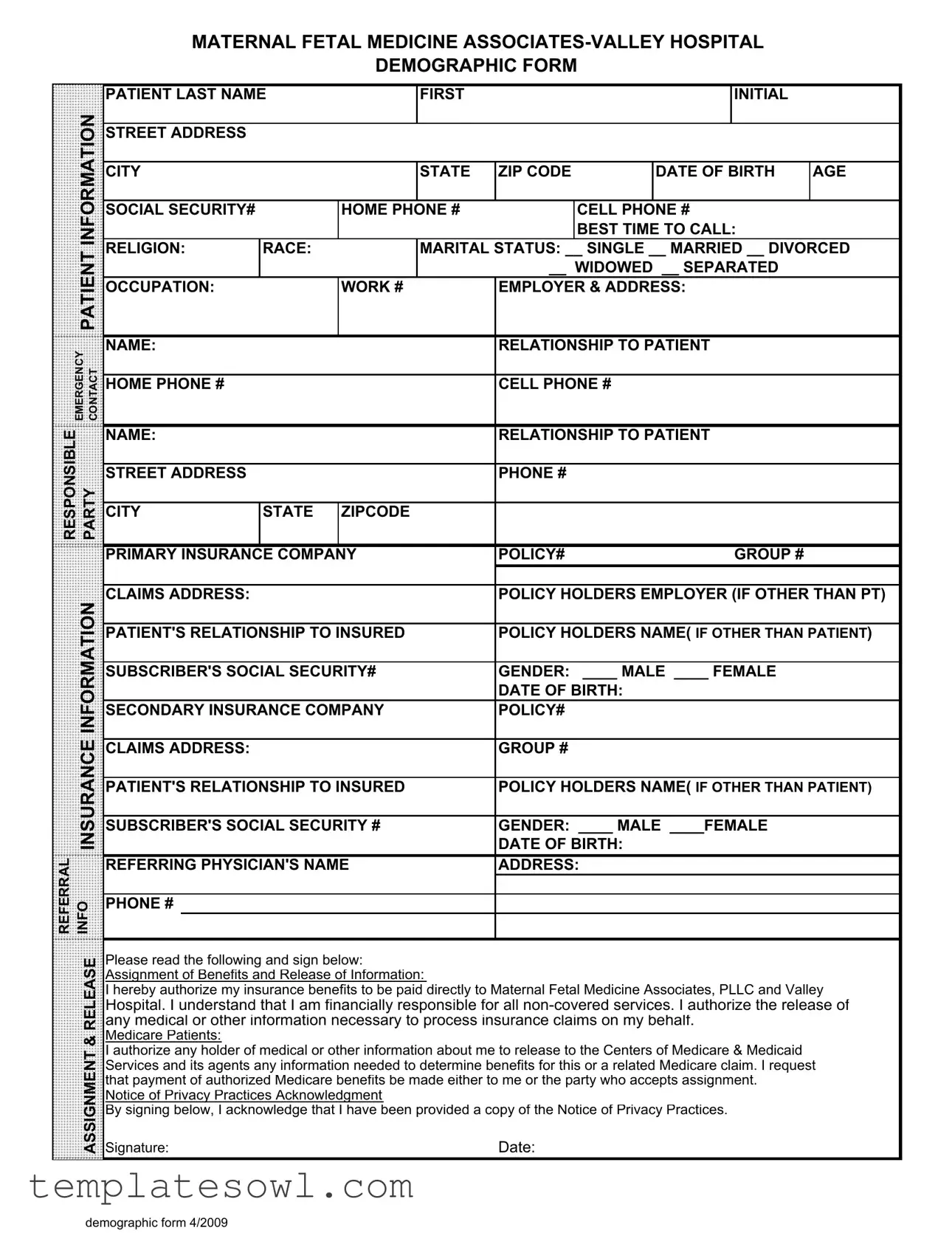What information is required on the Patient Demographics form?
The Patient Demographics form collects a variety of important information about the patient. This includes personal details such as the patient's name, address, date of birth, and contact numbers. Additionally, it requests socio-economic data like marital status, occupation, and employer information. The form also asks for insurance details, including primary and secondary insurance companies, policy numbers, and the relationship of the patient to the insured individual. Emergency contact information is also included, ensuring that staff can communicate effectively in case of an unexpected event.
How is the information used?
The information gathered in the Patient Demographics form serves multiple purposes. Firstly, it helps healthcare providers verify identity and contact details. Moreover, it is crucial for insurance billing by ensuring that proper claims can be submitted. Physicians also rely on this data to understand patient backgrounds, which can inform treatment decisions. Additionally, certain demographic information may help in research studies related to healthcare trends and outcomes.
Why is it important to complete the form accurately?
Completing the form accurately is vital for several reasons. Inaccurate information can lead to billing errors, which may result in unexpected charges for patients. It may also delay necessary medical services if verification is needed. Furthermore, having correct demographic data helps ensure compliance with regulations and can improve care by allowing healthcare providers to tailor services to diverse patient needs. Overall, accuracy supports both administrative efficiency and quality patient care.
Are there privacy protections for the information provided?
Yes, privacy protections are in place for the information provided on the Patient Demographics form. By signing the release section, patients are informed that their data will be used solely for medical and billing purposes. Healthcare providers are bound by laws such as the Health Insurance Portability and Accountability Act (HIPAA), which mandates the protection and confidentiality of patient information. Patients are also encouraged to review the Notice of Privacy Practices to understand how their information will be handled and what rights they have regarding its use.

